Genre: Action Developer: Sega Ent. Publisher: Sega Ent. Players: 1 Released: 1988
When I was a kid, there was this awesome arcade machine called Subroc 3D. Developed by Sega, it was a submarine “simulation” that played nothing like a simulation but was an incredibly good time. My local Circus Playhouse (an early competitor of Chuck E. Cheese’s) had the deluxe model, with its periscope controller. I remember having to stand on a little step stool just to reach it, but boy, did I pump quarters into that thing. It was so much fun to shoot ships, submarines, and even fly saucers in stereoscopic 3D.
I missed that 3D effect for years, until I found that my Master System had glasses that could create it. I was enthralled by Maze Hunter 3-D and played Missile Defense 3-D for hours, but I didn’t discover that Sega had actually ported Subroc until sometime later in the form of Poseidon Wars 3-D. I found it at a local video store, hidden among other gems like Golvelius and Miracle Warriors. None of my friends gave it a second glance, but I knew INSTANTLY what the game was. I snatched it off the shelf and rented it feverishly, rushing home on my bike as quickly as I could.
Playing with the SegaScope 3-D glasses takes some getting used to, as anyone with a pair of them will attest. They’re heavy and not very comfortable. The early liquid crystal display technology isn’t the most consistent, either. Some games have a great 3D effect, such as Missile Defense 3-D, and some, like Blade Eagle 3-D, are a bit underwhelming. It was a bit of a crapshoot every time one popped in one of the 3D games, as the immersion wasn’t always consistent. Some were incredible-looking, and others left much to be desired or even played better without the glasses.
Poseidon Wars 3-D falls into the latter category. The 3D effect across the parallax rows of water looks quite good – better than Subroc’s mostly stagnant sea, in fact – but the ships and other sprites don’t fare as well. There is an option to play in the standard 2D mode (press button 1 on the second controller at any time), though it doesn’t change the biggest problem with Poseidon Wars, which is the slow gameplay. The visuals are colorful and detailed (the legendary Rieko Kodama was one of the project’s three graphic designers), but the game is just… empty. Where Subroc’s screen was filled with enemy ships, planes, and 3D projectiles, Poseidon Wars throws only the occasional foe or missile at the screen. The arcade game’s action wasn’t exactly feverish, but it had a more consistent pace to it. The aerial boss battles are gone as well, reducing the intensity even further. Overall, Poseidon Wars feels more like casual target practice than actual combat. So casual is the combat, that button 2 on the second controller lets players escape a mission to resupply. It’s as though the enemies are in no rush to finish the battle and have nothing better to do than sit around and wait for their opponent to return.
The diminished combat is the clearest sign that Poseidon Wars is more of reimagining of Subroc than a direct port, but there are other, more subtle changes. First, A score of 15,000 must be achieved to pass the five training missions (score less than 5,000 and the game ends), and scores in each of the eight stages raises players’ rank, all the way to fleet admiral. There are also fuel and damage meters now, meaning no more one-hit kills. Damage taken increases fuel consumption and passing even-numbered stage revamps the Poseidon’s arsenal, repairs damage, and refuels the ship. Taking damage in each level reduces the ship’s offensive capabilities, but the game never leaves players without a means to attack. Considering how slow everything is, there’s never really a danger of lacking firepower.
I know I might sound too negative, and that’s not my intention. Poseidon Wars isn’t a bad game, particularly if you haven’t already played Subroc. Without that basis for comparison, the game is enjoyable to a degree. I have to commend Sega for taking steps to give the home version longer legs by adding upgrades and more stages and for removing the single-hit deaths. The sweet soundtrack (possibly by Tokuhiko “Bo” Uwabo) is also a plus. The problem is what was sacrificed in the exchange. Had all these features been added to the arcade original, which was already six years-old by this point, Poseidon Wars could have been a truly great 3D game. Instead, it struggles to be average.
Given just how diminished the overall experience is, I can’t recommend Poseidon Wars to anyone looking for an immersive SegaScope experience. Missile Defense 3-D, Zaxxon 3-D, or my favorite – Maze Hunter 3-D, all provide much better 3D effects. They’re all much more fun to play as well. Those wanting to see what Subroc 3D would have looked like on a console should play the ColecoVision version instead. It’s a more faithful version that has more enemies onscreen!
SCORE: 5 out of 10

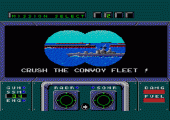
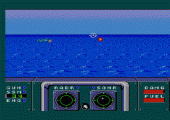
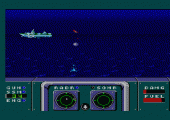
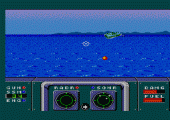
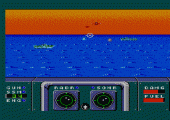
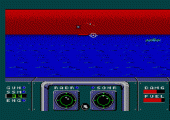
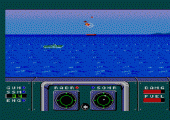
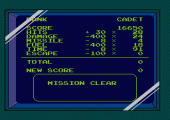
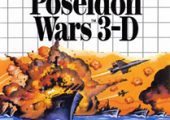
Recent Comments